
limbos
-
Posts
2,287 -
Joined
-
Last visited
-
Days Won
1
Content Type
Events
Forums
Downloads
Quizzes
Gallery
Blogs
Posts posted by limbos
-
-
This discusses that Vinegar shouldn't be used & has a link to the ARC, but that doesn't page doesn't exist.
When I went directly to the ARC & searched for "Vinegar & Jellyfish", nothing was found. Bit odd.
Whatever the answer is for the Primary Treatment of stings, a consistent response is needed, with the treatment made available on every beach.
Are the Lifeguards trained in how to deal with stings?
Whereas, this says that Vinegar should be used, & is from 2014.
http://www.emedicinehealth.com/jellyfish_stings/page4_em.htm
Faraday, there has indeed been commotion about the use of vinegar. The specialist and experts are in hot debate about this, but the result at the moment is that vinegar is still advised to be used for box jelly fish stings.
Here are some views by Lisa Gershwin on the research;
There were several things questionable about the research, in no particular order:
The authors forced nematocyst discharge with an electrical current. The nematocysts fired into a membrane, then venom was collected under the membrane; vinegar was then applied to the tentacles, and then they collected venom again from under the membrane. They found that 60% more venom was obtained in the second round. They therefore concluded that the vinegar was causing venom to come out of the already discharged nematocysts.
First, There is no evidence that demonstrates that electrocuted tentacles behave like natural stings. In particular, it seems more likely that natural stings leave little venom behind, whereas electrocuted tentacles are likely to cause abortive firing, or incomplete firing, thus quite possibly leaving some venom behind. If this is the case, then the model does not represent real stings.
Second, their experimental design did not control for venom initially discharged into the membrane or pooled above the membrane, only what came through with each wash. Therefore it may be that some venom was lodged in or above the membrane from the initial electrocution, and was subsequently recovered by the second wash, giving misleading conclusions.
Third, the post-vinegar recovery was of very low venom potency, suggesting that it was diluted, supporting the idea that the venom came from in or above the membrane, not from secondary discharge. In this case, vinegar would be a better solvent than originally realised -- and better than seawater -- and therefore an even better first aid option.
Fourth, and perhaps most importantly, the percentages tell the whole story. The authors estimated that 20-30% of nematocysts fire initially (I estimate 10-20%, but the difference doesn't matter for this argument). So 60% of 20-30% is about 10-15% additional venom load. But even if their hypothesis turns out to be entirely correct, that still leaves the other 70-80% of nematocysts armed and dangerous. It's that 70-80% that you want to disable, because it is greater than the 10-15%. So if vinegar causes 10-15% more but it also causes 70-80% less, then by using vinegar you're still some 60-70% better off to use vinegar. Sorry my math is probably not so good this time of night (2am), but you get the idea hopefully.
Finally, much of the media quoted one of the authors of the study as saying that they found that vinegar makes stings worse. That's not true -- that's not what they found. They didn't test stings. They tested electrocuted tentacles in a lab. What they actually found was additional venom recovered after application of vinegar to electrocuted tentacles over a membrane in a lab -- that's all, no more can be inferred from this experiment. But their incomplete procedures even make what they did find debatable.
For these reasons, safety organizations in Australia have not adopted the study or changed their recommendations.
Dr Lisa-Ann Gershwin
Research Scientist and Writer
-
To ,solve, the problem I think only possibility is to install a big large fishing net , to hold the jelly fish back , and make swimming areas sorounded by nets , I think this should be a possible mission to realeize , when I ask in pharmacy about jelly fish bytes , only give me a cream for normal insect bytes , not sure the antiserum is avalible for the public?
In japanese sea the jellyfish have higest concentration , I see in national geographic !
Looks like the sweet mmm my paradise is gone!
There is no cream of something like that against jelly fish stings. The best line of defense is to use vinegar.
The Irukandji box jelly fish are so small that they will be able to pass through the nets, currently there's no positive sighting of irukandji in Thailand but they may be around.
-
Is there any maps avaiable over where jellyfish are more common in Thailand ? Not every beach resort I suppose.. Is it more of them this month than others?
Here's a map provided by DAN, which is already a few years old, but still accurate.
The current monsoon period in Thailand, roughly from August to October/November does see a higher chance of getting stung, but stings have been recorded around Thailand in months outside of the mentioned period.
-
Poor woman, such a painful way to die.
However, is washing the area with Vinegar still indicated? Don't think it is - at least not in every case.
Yes it is, vinegar is still the first line of defense/help for box jelly fish treatment once stung. It will not reduce the pain but it will prevent other still active stingers from firing off.
-
^^ fully agree with above information by cumgranosalum!
-
Stingose - works like magic on jellyfish (and mosquitoes) stings.

Absolutely useless when dealing with box jelly fish stings. Vinegar is the advised treatment and if needed CPR.
-
Gulfsialor, that was the correct procedure, but I don't think this involved a box jellyfish. Can you describe where on Chaweng beach this occurred, in front of which hotel? Did you check with the hotel(s) if they had vinegar available?
I'm very interested to find out, since I'm trying to have hotels around the island to put up vinegar posts!
It was next to Monkey bay. Didn't bother to ask Ozo or Monkey Bay for vinegar, but the play area guys and jet ski guys didn't have vinegar. The sailboat/SUP rental place advised to do the creditcard method.
I don't think it was a particular nasty jellyfish, as after 10 minutes she was ok again to go into the water.
Gulfsailor, next time use vinegar if available or use seawater. Fresh water may fire off more charges in the tentacles, especially with box jelly fish.
-
This reticulated ptyhon, pictured below, was caught in our chicken den, three months ago. It ate 4 chickens and a hen over a few months, when it was in a coma from eating the hen, we spotted it and had it removed from the premises. Now it's part of a snake farm on the island.
The big lizard crossed Bang Rak road this afternoon, on the way to the beach and took shelter at Nara Garden. It's probably on a barbie by now.
-
Yes, green tree snake
-
Yes it is a minor embellishment. However the gulf is fetid from top to bottom, and the existence of larger species has been decimated because of the wholesale raping of smaller species (anchovies especially), I dread to think what toxins are present in the shellfish, but I guarantee it would be very concerning. It is a tribute to the tenacity of the jelly fish that they can exist ion such a putrid environment. But I guess that is where life began in a sense, so they have been through quite a lot of hardship in the last 4 billion years or so.
"Obviously the gulf is virtually devoid of fish..."
Neither is that true. Obviously.
You are trying to say that lack of predation is the cause of an increase in the jellyfish population?
I don't believe there is enough solid evidence as yet to support the suggestion of an increase....and even if this were the case it my well not be due to lack of predation of the species....climate change and different conditions in the estuaries and currents could be moving populations around differently....As well as changes brpought about by the massive increases in populations on the islands themselves and the ramifications thereof.
Another factor is the dramatic increase in the numbers of people actually in the sea.
I am not saying that at all. I am saying that they are virtually unrelated, and as you agree there is little information about it in this part of the world. It is anomalous behavior, There have been 4 cases I can recall in 30 years... no increase there my friend.
There are way more than 'just' 4 cases in 30 years. That may indeed be what you personally recall, but thee's a lot more cases out there that never make it into the media. Only the fatalities of box jelly fish make it into the media.
Koh Phangan has now since 2002 4 documented box jelly fish fatalities, 2 on consecutive days in August 2002 on Haad Rin, one last year on Bottle beach in August and one this year on Haad Rin again, 31st July.
I can only hope that the authorities, powers that be and vested interest on Haad Rin are willing to listen to experts and do something about the situation. The way the beach is located, it will be fairly easy to put up stinger nets.
This years accident also had three other persons injured at the same moment. Other locations in the Gulf had fatalities as well. Koh Samui back in 1999 on Chaweng beach and Cha'am.
Encounters also happen at the Andaman side.
The list of injured people who survived in the Gulf is sadly enough, fairly long. Almost each year this list grows and there seems to be a concentration in accidents in the August-November period.
-
Dr Thon, vice dean, faculty of fisheries, Kasetsart University basic advice is to refrain from swimming, no shit!
What he actually said was "refrain from swimming during the rainy season', and if you have to " swim where there are waves and cover yourself with body or stinger suit'. All common sense advice i think. But of course leaving these clarifications out enabled you to indulge in your daily fix of Thai bashing didn't it? Carry on making a fool of yourself, it gives plenty of us on here a good laugh!
The original post of the news was adjusted and now vinegar use is mentioned, but in the wrong order. Using seawater is advised before using vinegar, which is the wrong running order.
Dr Thon is aware of a paper that shows the course of action when dealing with jellyfish stings, but he really doesn't have a clue at all what he's talking about. The official Thai work group, dealing with box jelly fish stings doesn't know this person and is trying to control the 'damage' he's doing.
This is most likely the poster he got parts of his 'knowledge' from. No idea how he came up with the seawater reference.
-
The best thing to do is pee/wee on someone who has been stung by a box jelly fish.. Also pee on their friends also.
Sent from my c64
That's complete nonsense with respect to box jelly fish stings and is strongly advised against doing this in case of a box jelly fish sting. Use of vinegar is advised!
-
Where have been confirmed sightings/attacks in Thailand? Koh Phangan? Koh Samui? Others? And the article says to avoid rainy season. When specifically is the start and end of rainy season on Samui and Phangan? I've heard many dates saying from May to November or September to November. I know the dates would be different than in Bangkok or most of the rest of the mainland.
Confirmed sightings have been observed at Khao Lak, Phuket, Krabi, Koh Lanta and Koh Racha Yai at the Andaman side (including Langkawi in Malaysia).
The Gulf had confirmed sightings on Koh Samui, Koh Phangan, Koh Tao, Hua Hin, Chaam, Pattaya and koh Mak.
Fatalities have been at Koh Lanta, Koh Phangan, Koh Samui and Chaam.
Recorded sightings in Thailand go back to the 1990's and very likely the box jelly fish have been around for much longer, although documentation is not available.
The attached picture is already a few years old but still valid;
-
So, box jellyfish are aggressive and attack without provocation?
Box jelly fish are not aggressive and they do not attack. You may end up being entangled in their tentacles though.
By no means do box jelly fish attack however!
-
The study you refer to is highly controversial among box jelly fish experts and current advice is still to use vinegar.
-
Vinegar will work, it won't reduce pain or heal, but it will stop active stingers from shooting off and adding more poison to the wounds.
No too sure about applying ice to the wounds though, never heard of this.
Remove the stingers with gloves, which you most likely won't have, so use credit cards or similar utensils instead. Don't make direct contact with the stingers on somebody's body.
-
Gulfsialor, that was the correct procedure, but I don't think this involved a box jellyfish. Can you describe where on Chaweng beach this occurred, in front of which hotel? Did you check with the hotel(s) if they had vinegar available?
I'm very interested to find out, since I'm trying to have hotels around the island to put up vinegar posts!
-
Thx guys, looked already at Makro but couldn't find them there, will check Big C.
Couldn't find any at TOPS either.
-
Any suggestions on where to buy canned artichoke hearts on the island?
-
Any additional information you can gather and share with me is much appreciated.
-
In many European countries it's against the law to disclose police checkpoints. Flashing your lights to point out a speed control for instance.
Nothing wrong with this action.
-
Kind of destroy paradise don't they?
I remember the days when they had a boat running up and down Chaweng beach announcing "Tonight, tonight Superfight".
THAT was annoying....
Don't think that boat is gone :-(
-
I know where it was held last year, this years poster has no info though. Most likely it will be held at Phru Chaweng, it would be nice to have a confirmation about the location.
-
And where is it? At IT complex in Lamai or Phru Chaweng? Isn't really clear.
Any idea what charity the money is raised for? Thx.

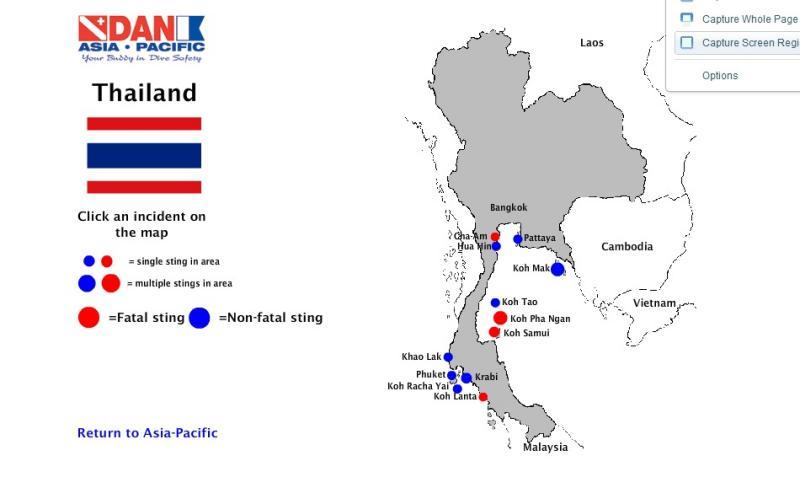
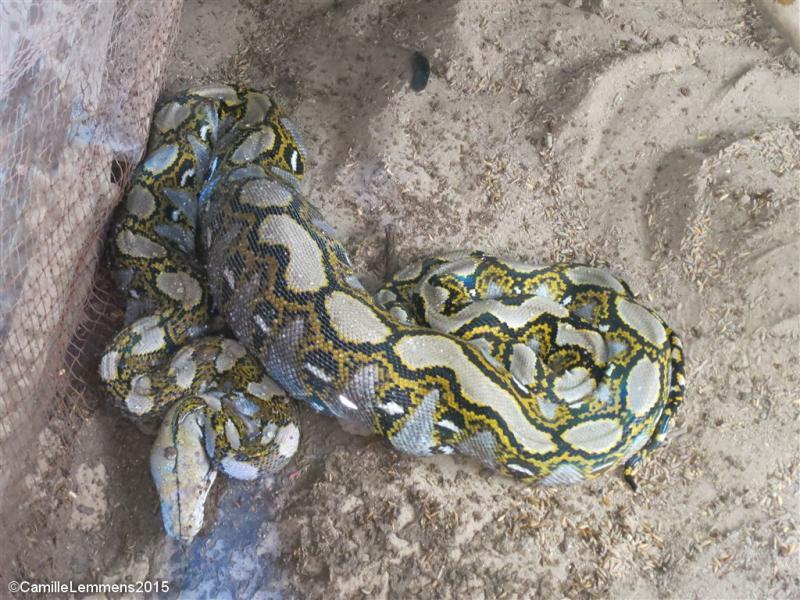

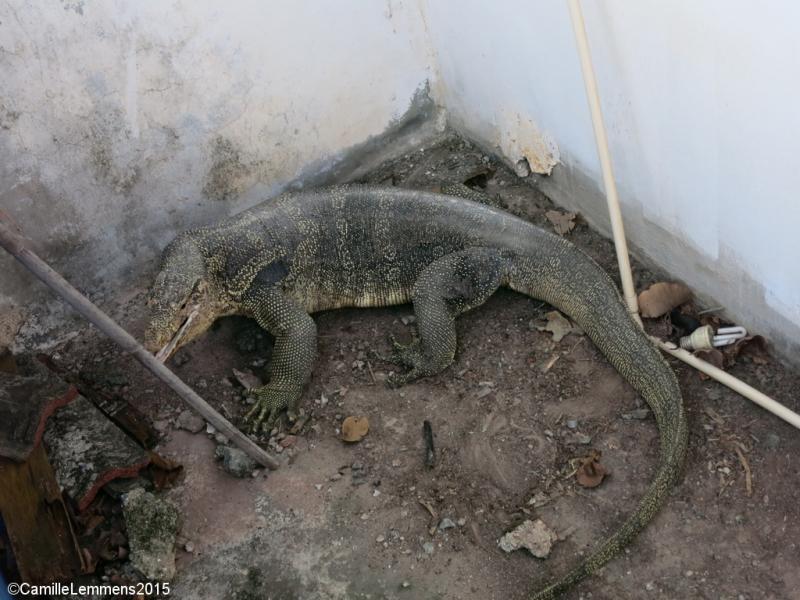
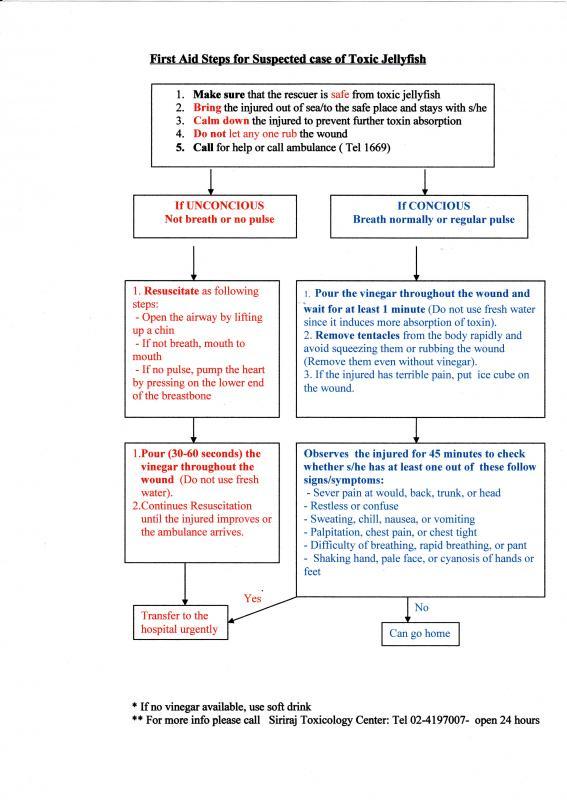
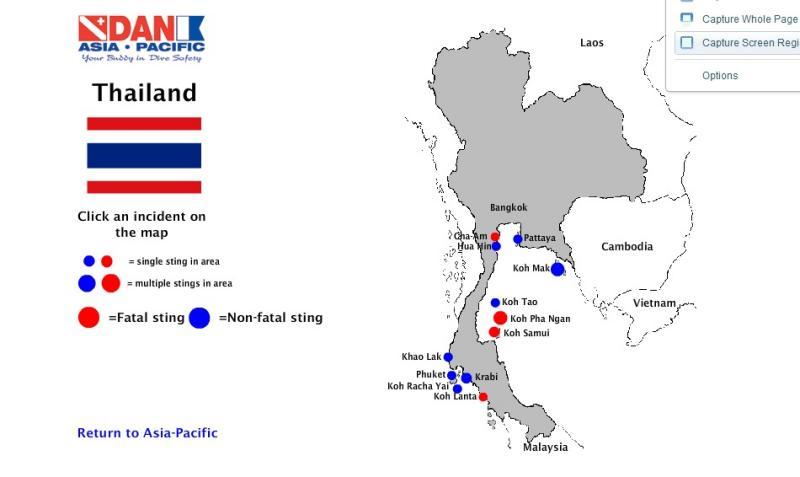
Box jellyfish sting kills woman in Koh Pha-ngan
in Koh Samui News
Posted
There's no proof that this will work with jelly stings, let alone box jelly